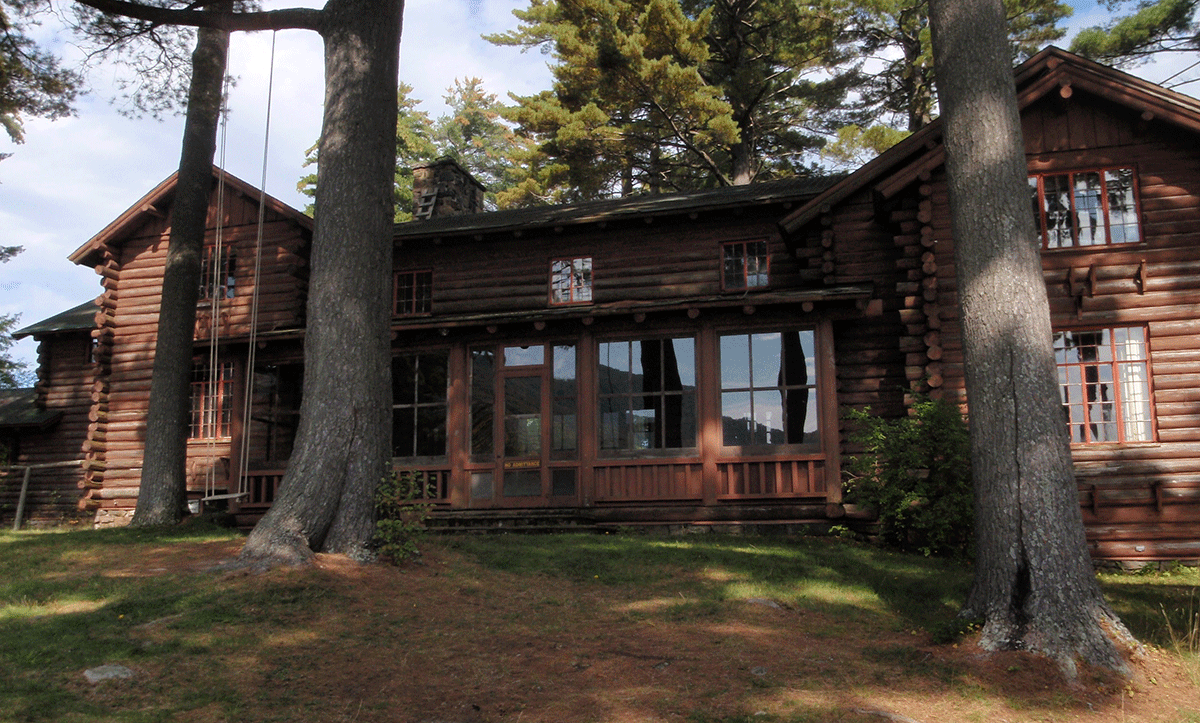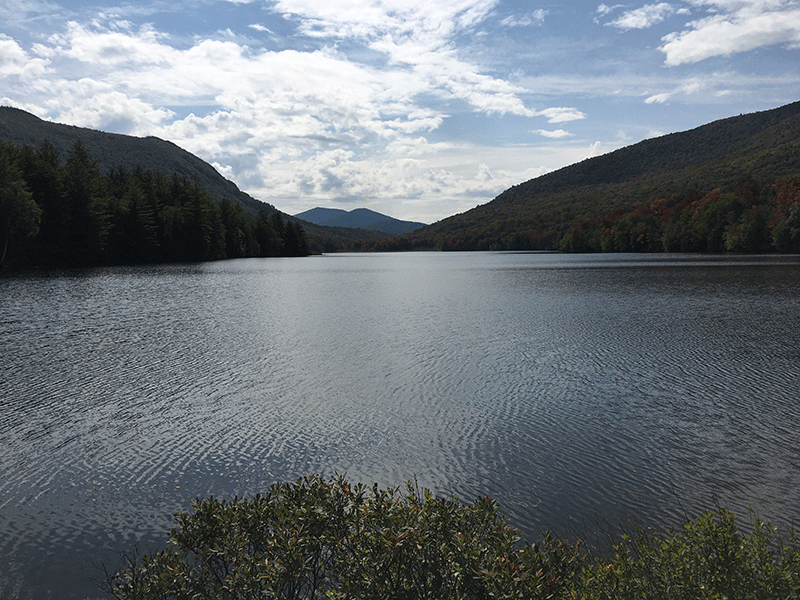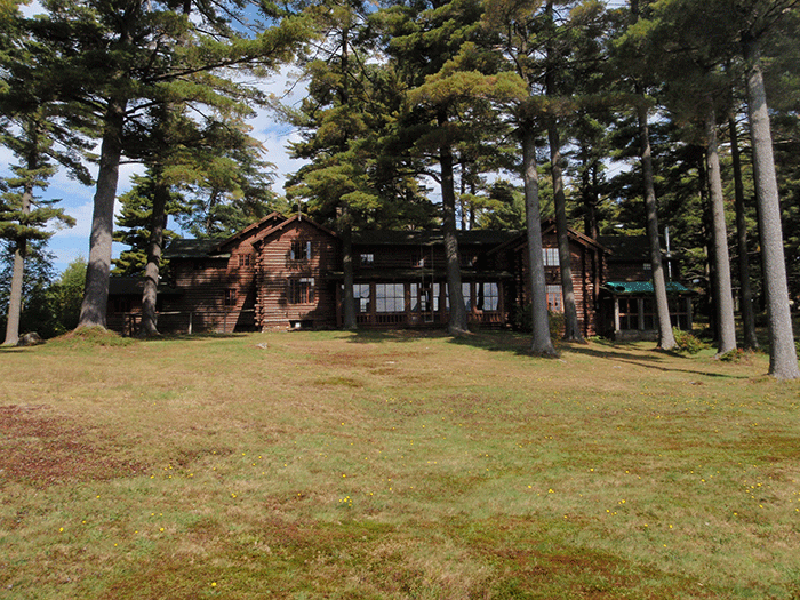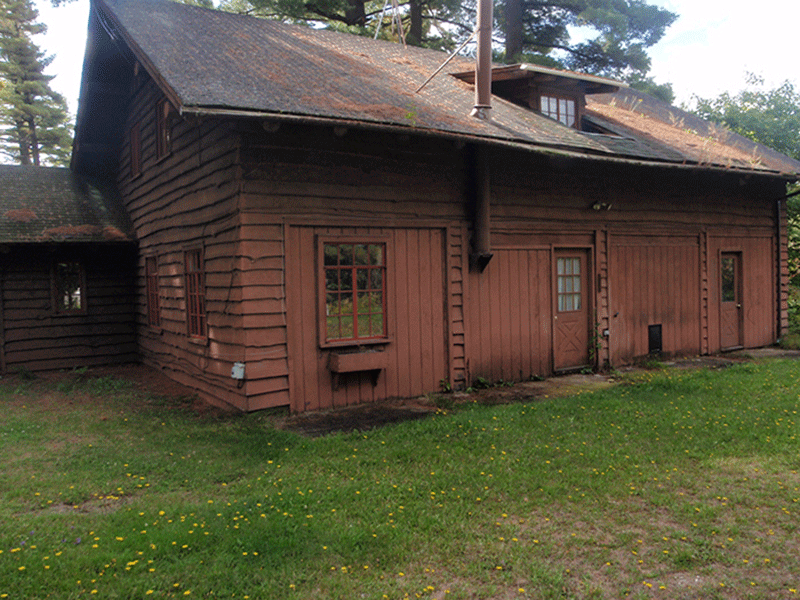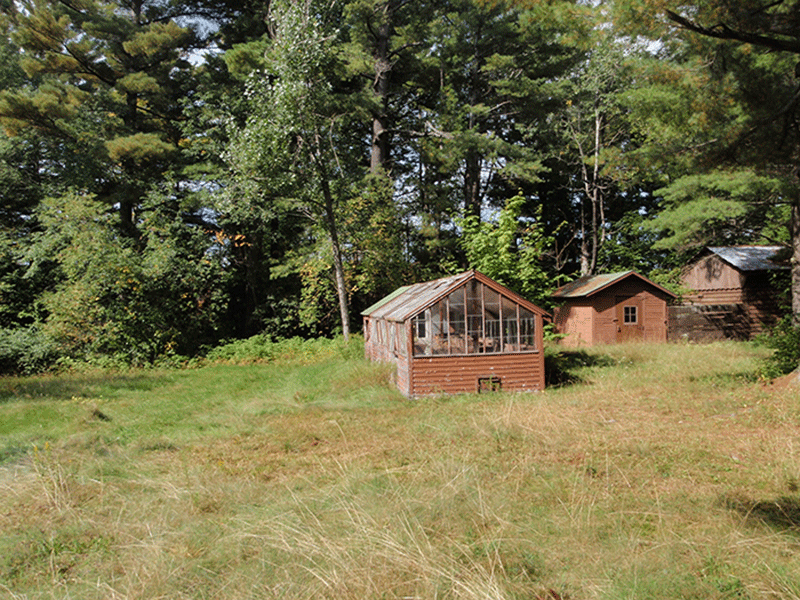A constitutional amendment to privatize Debar Lodge is a bad deal
Protect the Adirondacks opposes legislation to amend Article 14, Section 1, of the New York Constitution, to remove six acres of public Forest Preserve, encompassing roughly two dozen buildings and the north shore of Debar Pond, in the Debar Mountain Wild Forest area. This land is in Franklin County, in one of the most remote parts of Adirondack Park. This legislation is A.7535A (Jones) and S.7868 (Stec).
Click here to read PROTECT’s public comment letter urging legislators to reject this amendment.
Click here to read PROTECT’s memo of opposition to this legislation.
This legislation seeks to take six acres of public Forest Preserve on the north shore of Debar Pond, and make these public lands private, to be used exclusively for paying guests. While amendments to Article 14 make sense in some situations, they should only be pursued for legitimate public purposes. In this case, these lands will be taken away from the public and turned into a gated private enclave. This amendment should be rejected. The people of the State of New York purchased these lands in the 1980s and have paid all local taxes on them for the last forty years.
This amendment, plain and simple, is a bad deal for the Forest Preserve and a bad deal for the People’s Land. Thousands of people have used this site in the last 10 years after the Department of Environmental Conservation (DEC) made it more accessible with a public parking area. This amendment will sharply restrict public access and enjoyment to Debar Pond by privatizing the best access points to the lake and monopolizing in private hands the splendor of the wild beauty of this part of the public Forest Preserve.
This legislation aims to privatize six acres of public Forest Preserve to create a private institute that plans, somehow, to restore and rebuild the dilapidated buildings on the property. This effort is under-resourced and will rely upon state funds for years to come to build a private resort. This proposal makes no sense for various procedural and substantive reasons and represents harm to our forever wild Forest Preserve – the People’s Lands in New York.
Protect the Adirondacks believes that the state should remove all buildings and restore the forest and reclaim this area as a remote Wilderness and motorless lake.
No First Passage without Enabling Legislation: Draft amendment language in A.7535A/S.7868 authorizes the land swap to remove six acres but provides no other information. To date, there has been no authorizing legislation promulgated. There should be no “First Passage” of this constitutional amendment without the necessary accompanying legislation. The enabling legislation is vital because it should spell out important details like the metes and bounds of the six acres of public Forest Preserve to be transferred. This will show precisely how public rights and access will be lost or greatly circumscribed. Enabling legislation will also spell out how the Forest Preserve is to be compensated. There are vital details about how this transfer of public lands will be operationalized that must be detailed in accompanying enabling legislation to A.7535A/S.7868.
No one knows what they’re really being asked to vote on without this necessary legislation.
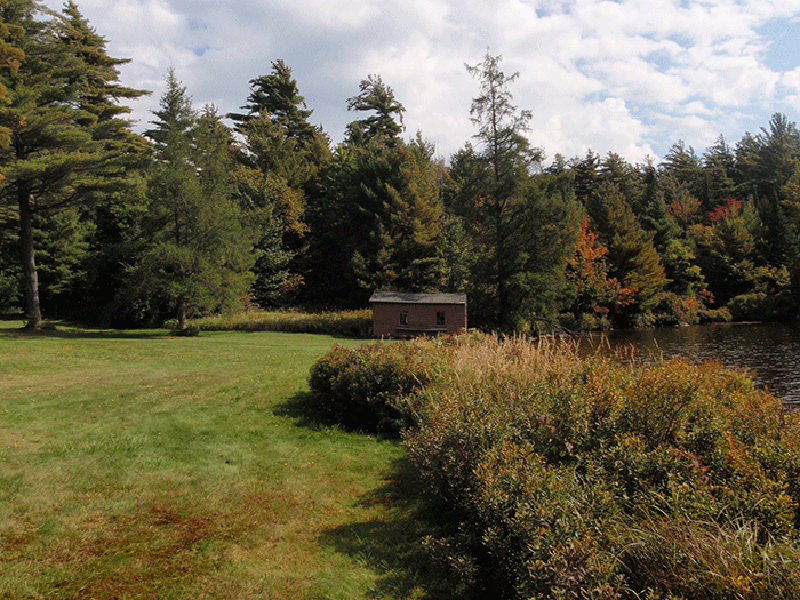
These two pictures show the open meadow that has been used freely and unfettered by the public to picnic and access Debar Pond. If these lands are privatized for private purposes then the public will lose out on easy access to these grounds. These lands right now are public Forest Preserve and the public will be prohibited from the open and free access to these lands that they’ve enjoyed for decades.
No Metes and Bounds, No Map Demarcating Lands to be Private: The draft amendment does not contain metes and bounds for the six acres to be transferred out of the public Forest Preserve to private ownership. This information is vital for understanding the scope and totality of this transfer. The open grassy meadow and shoreline of Debar Pond have been a popular picnicking, swimming, fishing, and canoe launching site for decades. We have heard that this area will be made off-limits to the public by the amendment. One reason that we oppose this amendment is because of how public rights to use and enjoy the most accessible and special parts of this property will be irretrievably lost.
It is simply not good government to pass legislation for 1st passage of a constitutional amendment with so many unanswered questions. Legislative leaders who support this bill must produce enabling legislation for public scrutiny.
Replacement Lands are Inadequate, Not of Similar Value: While the amendment talks about a transfer of “not less than 400 acres” in compensatory lands “on condition that the legislature shall determine that the lands to be received by the state are at least equal in value to the lands and buildings to be conveyed by the state” we’re hard pressed to see this as a criteria that can reasonably be met. The Debar Lodge property, despite the conditions of the buildings, is a property worth millions of dollars given recent land sales in the booming Adirondack real estate market. In addition, the lodge has an exclusive setting on the shoreline of an otherwise undeveloped lake.
Protect the Adirondacks finds that this amendment is designed to fail because it is fundamentally unrealistic about the value of the Debar Lodge complex on Debar Pond. If this amendment passes, Protect the Adirondacks will ensure that the “equal value” clause is upheld, which we believe is a price tag in the millions of dollars. In addition, we believe that the proponents of this project are lowballing the price of compensatory lands and will seek to provide lands with greater acreage but much less value.
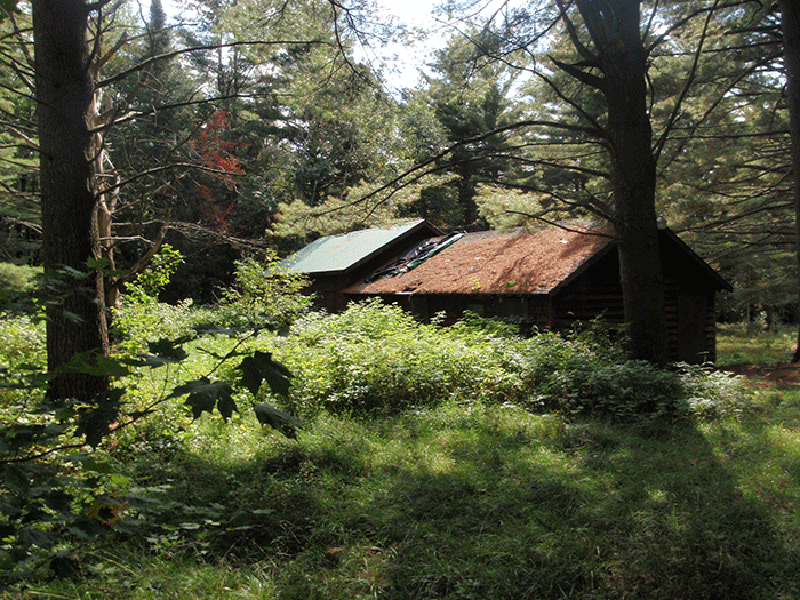
These three pictures show other buildings on the grounds that are in disrepair. These buildings are not architectural gems that merit preservation. These buildings are not functional as educational facilities.
A Constitutional Amendment to Preserve Debar Lodge Will Strip Public Recreational Rights and Use: Protect the Adirondacks does not see how creating a private six-acre complex around the Debar Lodge buildings will not undermine and greatly weaken long-enjoyed public access to Debar Pond. The Debar Lodge Institute seeks to create a private compound for its guests and staff where public access to the lands and shoreline at the north end of Debar Pond, the best access to Debar Pond, and the most accessible area, will be greatly diminished. The public will not be allowed on the six acres of private lands once the land is transferred. We cannot support a proposal that strips away the rights of New Yorkers to the best access for Debar Pond.
For more than a decade, the public has greatly enjoyed carte blanche access to the Debar Lodge lands. State taxpayers purchased these lands more than three decades ago and have paid all local taxes during that time. The public has enjoyed the parking area and short walk or canoe carry through the grounds to Debar Pond. Public use has significantly increased in the last half dozen years since the DEC has stopped using the site to house its staff and built a public parking lot. We are greatly concerned about efforts to privatize and abridge the public’s access to these lands. We do not see how the Debar Lodge complex can be transferred to private ownership without seriously and irreparably damaging public access and enjoyment of Debar Pond.
In our meetings with amendment supporters, they were adamant that they needed exclusive privately-controlled access to the Debar Lodge site to conduct their activities. This means that the short canoe carry and open lawn access to Debar Pond will no longer be available to the public. Project supporters made it clear that free public use, a hallmark of the Forest Preserve, was incompatible with the development of the Debar Lodge Institute.
Debar Lodge is Not Large Enough for a Conference Center: Unlike other numerous conference facilities in the Adirondacks, neither Debar Lodge nor any of the other smaller buildings on the property are large enough to house a conference of 100 people in one meeting room. The facility simply does not have to requisite size to facilitate a conference or large gatherings. Without accommodating large gatherings, we do not see how the Debar Lodge Institute can be financially viable. This project is a poorly conceived pipe-dream.
Great Camp Social and Architectural History Already Adequately Preserved and Interpreted: The central purpose of the proposed amendment is that it’s necessary in order to save Debar Lodge, which some contend is an historic “Adirondack Great Camp.” The State of New York has already taken extraordinary efforts to maintain Great Camps in the Adirondack Park. We do not need to save the dilapidated Debar Lodge in order to preserve Great Camp history and architecture in the Adirondacks.
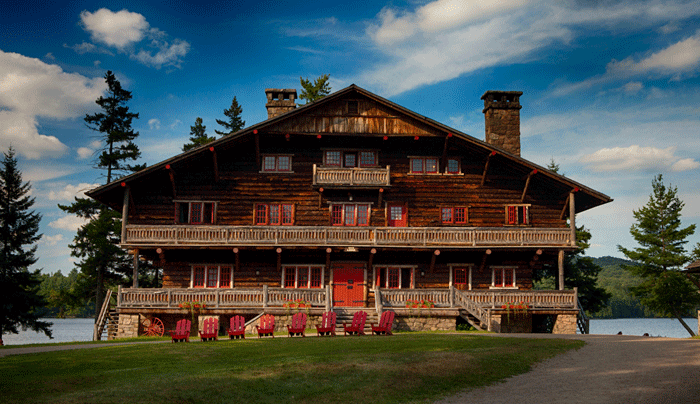
Main Lodge, Great Camp Sagamore, a genuine Great Camp, south of Raquette Lake. This Great Camp was privatized and could service any of the programmatic ambitions of the Debar Lodge site.
Great Camp Santanoni on Newcomb Lake is a complex of building deep within the High Peaks Wilderness. This Great Camp was purchased in the 1970s as part of a 12,000-acre purchase of lands that were added to the High Peaks Wilderness. Great Camp Santanoni existed in a state of benign neglect for decades. A new State law was passed to allow its buildings to remain on the Forest Preserve if they met a specific purpose. The Great Camp Santanoni complex, and its access road, remain in the Forest Preserve and were classified as a Historic Area under the Adirondack Park State Land Master Plan (APSLMP). Great Camp Santanoni was eventually stabilized with millions of dollars of state funding beginning in the 1990s.
The continued existence of Great Camp Santanoni, which we acknowledge is an attraction for many people and is considered an important cultural resource in the Town of Newcomb, has diminished the public experience on Newcomb Lake. The Historic Area has also created management tensions from the use of snowmobiles to ferry staff and supplies to the Great Camp on the 5-mile-long access road in the winter and state administrative use of that road with motor vehicles in the summer months. Despite these problems, we foresee the continuation of Great Camp Santanoni and recognize that it provides a viable public education and interpretation experience for Adirondack Great Camp architectural and social history.
Great Camp Sagamore has also been preserved and fully restored. As we see it, there is no better preservation effort in the Adirondacks, and no better educational effort in the Adirondacks, for Adirondack Great Camps. Great Camp Sagamore is a fully restored Great Camp complex of more than two dozen buildings on Sagamore Lake. Two Article 14 amendments in the 1980s transferred Great Camp Sagamore and more than a dozen acres to a private institute for educational purposes. The Sagamore Institute has worked since the 1980s to provide public education and interpretation about Adirondack Great Camp architectural and social history. The facility is also used for private conferences and events such as weddings.
Sagamore Institute provides the most in-depth educational opportunity for Great Camp architectural and social history in the Adirondack Park for paying customers and school groups through guided tours. While the Great Camp complex has been fully restored, the public experience on Sagamore Lake has always been circumscribed by the Great Camp.
Today, public access to Sagamore Lake is sharply curtailed. Public parking areas and access to the lake have never been adequately developed, largely because the private institute resisted them. The guests at the Great Camp enjoy easy lake access from a restored boathouse and series of docks, which are off-limits to the public. The Great Camp Sagamore complex dominates the lake where members of the public are, in essence, second-class citizens.
Many other Adirondack Great Camps, recognized for their architectural and social history, are protected and restored by private owners across the Adirondack Park. Most of these camps today are located on relatively small acreages, with a few exceptions, where it is unlikely that they would be part of any future public land purchases for the Forest Preserve. The future of these several dozen Great Camps is reasonably secure as these camps are privately owned and maintained. Many of these camps have been recognized for their architectural significance and have been showcased at times for public tours.
Wildness is the Overriding Forest Preserve Value at Debar Pond: Protect the Adirondacks has a fundamentally different vision for the Debar Lodge property than amendment supporters who seek to privatize the property. In our vision, Debar Pond would be a place that is managed to grow even wilder in the future than it is today. In our vision, Debar Pond would be another Lake Lila or Boreas Pond or Little Tupper Lake or Henderson Lake, a motorfree and wild lake where the public can canoe, hike and camp, in a landscape that grows wilder decade after decade. We note that public use at Debar Pond has tripled in the past several years. The DEC says that this is because Debar Lodge was no longer used as a private residence by a DEC staffer/caretaker, making the site more open and welcoming to the public. Perhaps this is so, but more likely, it is the fact that word got out about great flatwater canoeing and camping on Debar Pond once it was more fully open to the public.
In our vision, we see Debar Pond as a unique and accessible wild area, a place where grandparents can one day bring their grandchildren to experience wildness in much the same way, unchanged and beautiful, as they experienced Debar Pond as children. There is nothing better to illustrate the promise of the public Forest Preserve in New York State than this kind of generation after generation enjoyment of wild nature at beautiful locations that grow even wilder year after year, decade after decade.
Make Debar Pond into another Lake Lila
The Lake Lila Model is the Best Historic Precedent for Debar Lodge and Debar Pond: The State of New York purchased Lake Lila and several thousand acres around it in the 1970s. Part of the purchase included Nehasane Lodge on the west end of Lake Lila. Peter Berle, then DEC Commissioner, oversaw the demolition and removal of that Great Camp and associated buildings. Today, Lake Lila is a treasured part of the William C. Whitney Wilderness area and has been enjoyed by hundreds of thousands of people for more than four decades for its beauty and wildness. Had Nehasane Lodge remained, the entire Lake Lila experience today would be fundamentally different and significantly diminished.
Protect the Adirondacks believes that Lake Lila’s restoration and its classification as Wilderness is one of the great success stories in the Adirondack Park. Today, Lake Lila provides a stunningly beautiful Wilderness landscape and experience and offers more than two dozen wilderness campsites. The lake is heavily used by the public all summer long, year after year. We believe that former DEC Commissioner Berle’s vision for Lake Lila was prescient and was the right decision because wild, motorfree lakes have only grown rarer and more precious in the last 50 years. Lake Lila would be a very different place today had Nehasne Lodge been preserved and/or privatized. It would not be the sensational wilderness area visited by hundreds of thousands of people over the years if a large building complex persisted on its remote shores.
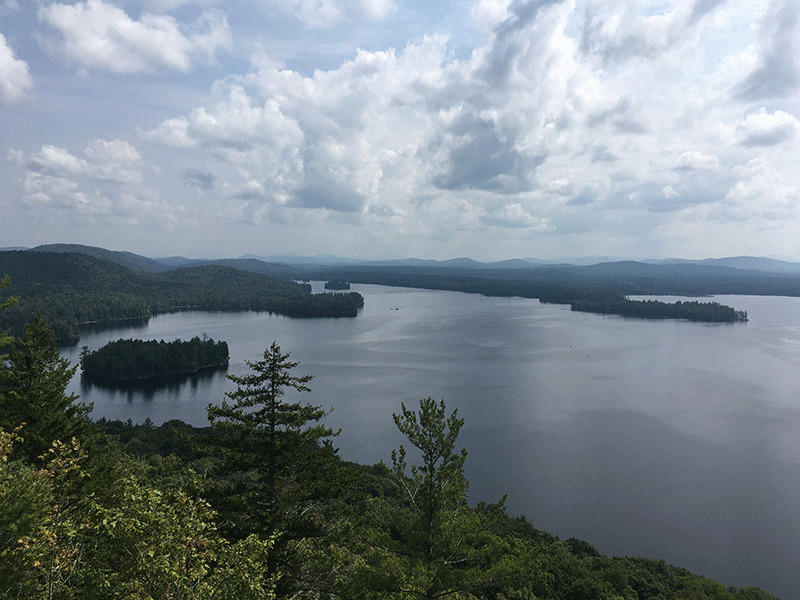
Protect the Adirondacks believes that the Lake Lila model is the best model for Debar Lodge and Debar Pond.
Public Educational Use Envisioned at Debar Lodge Can be Undertaken at Other Sites Through New Partnerships: One reason advanced by supporters for saving Debar Lodge is that the facility will be devoted to things like working with the wounded warriors project or to promote racial diversity in the Adirondacks. These are terrific goals, but it should be pointed out that there are many educational facilities in the Adirondack Park that would eagerly make their facilities available to collaborate on these worthy programs.
New Drain on Environmental Protection Fund, Just Like Great Camp Santanoni, It Never Ends: Just as the restoration of Great Camp Santanoni has been a drain on the Environmental Protection Fund for decades, amendment supports will seek to make sure that restoration of Debar Lodge is similarly funded through annual EPF appropriations. This is a poor long-term investment by the state.
Staffing Will be Difficult: Given the remote location, more than an hour’s drive from Saranac Lake and Lake Placid, and 45 minutes from Malone, it will be very difficult to find staffing for this facility. This is one of many real and practical challenges facing this plan.
Protect the Adirondacks does not support an amendment to Article 14, Section 1, of the State Constitution to authorize the removal of the Debar Lodge complex so it can be preserved and managed as a private inholding in the Forest Preserve as some type of commercial and educational facility. As stated above, the best long-term use of the Debar Lodge/Debar Pond site is removal of the buildings and restoration of the site to a wild forest setting. We call upon you to reject A.7535A (Jones) and S.7868 (Stec).

